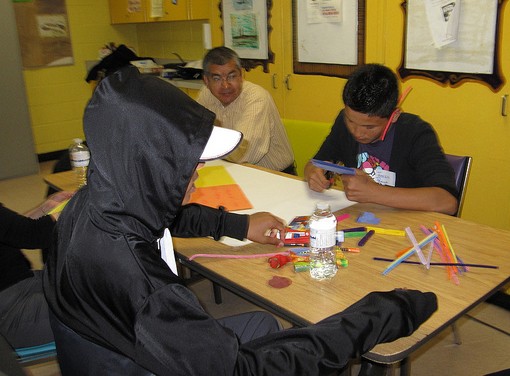On Tuesday August 24th, I went to a Riverdale Park Charrette at the Toronto Design Exchange. The DX is a nonprofit organizations supporting and promoting Canadian design and is housed in the old Toronto Stock Exchange building. The DX always gives me a sense of historical design and accomplishment – things have happened here to shape Toronto and Canada.
The Riverdale Park Charrette was a treat to attend and participate in. I was surrounded by architects, landscape architects, community stakeholders from the library, Chinese Business Chambers of Commerce, residents, City Councillor Paula Fletcher, City of Toronto Parks and Recreation employees and Bridgepoint Health representatives. The setting was very professional and directed towards results.
The morning began on a lighter note, each team created a playdoh ideal Mayoral candidate. There were a many overlapping qualities. An open heart, hands reaching out to the community, grounded, big brain, visionary, voice of the people, sense of humour, listening skills and arts and environmental interested.
Then we had a long and in-depth description of the site, site restrictions, and current site activities.
As a group we addressed goals and concepts for the design of the park site. Through dotmetrics we determined the top 5 concepts for the design portion of the day. I was surprised that the whole process was very orderly and VERY quiet, something I am not accustomed to when I do Action Mapping with coloured post-it notes and encouraged collaboration.
By the end of the day, I am happy to say that our Team had the most colourful solution of pathways, community based projects, and something that pleased every team member – who were representing a full spread of interests. Our team offered a full accessible walkway that doubled as a sitting area and amphitheatre, a picnic area near Bridgepoint Health, a market place for kiosk vendors, a legalized graffiti wall to promote public art and expression, a tinker town area for hands-on intergenerational learning, a pathway to healthy living with exercise stations and a grand idea to have a hot air balloon viewing station.
The Riverdale Park Charrette brought me back to my architecture roots and reminded me that my foundations are strong in design, but I am proud to say that I do keep community building and social return as my highest priority.
